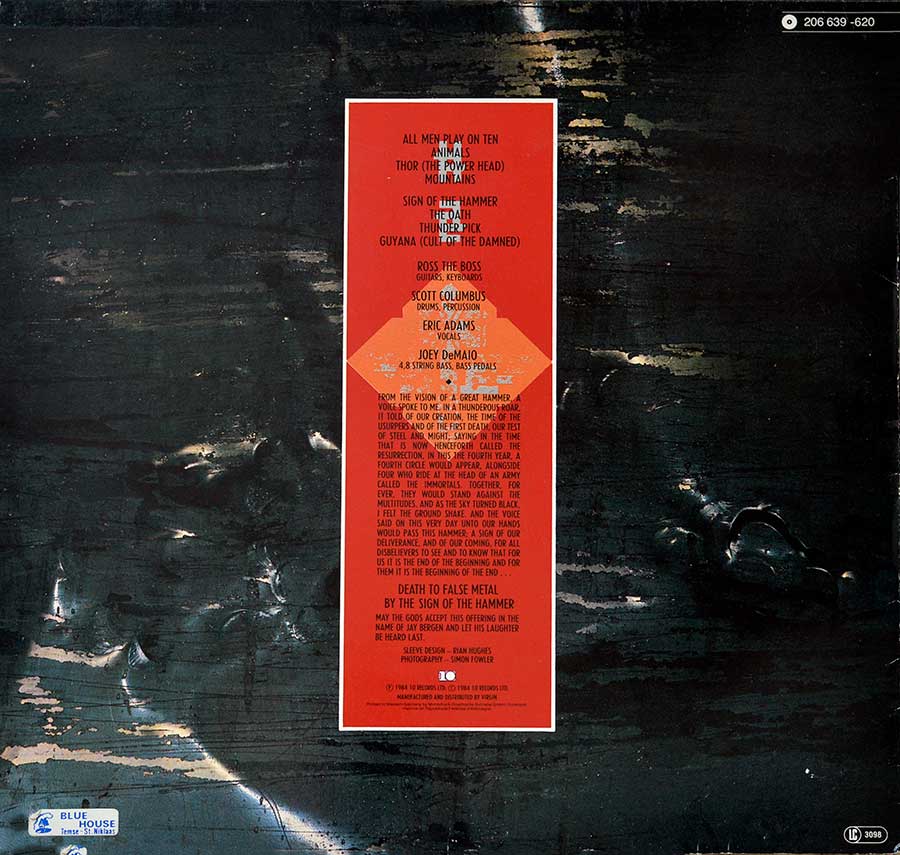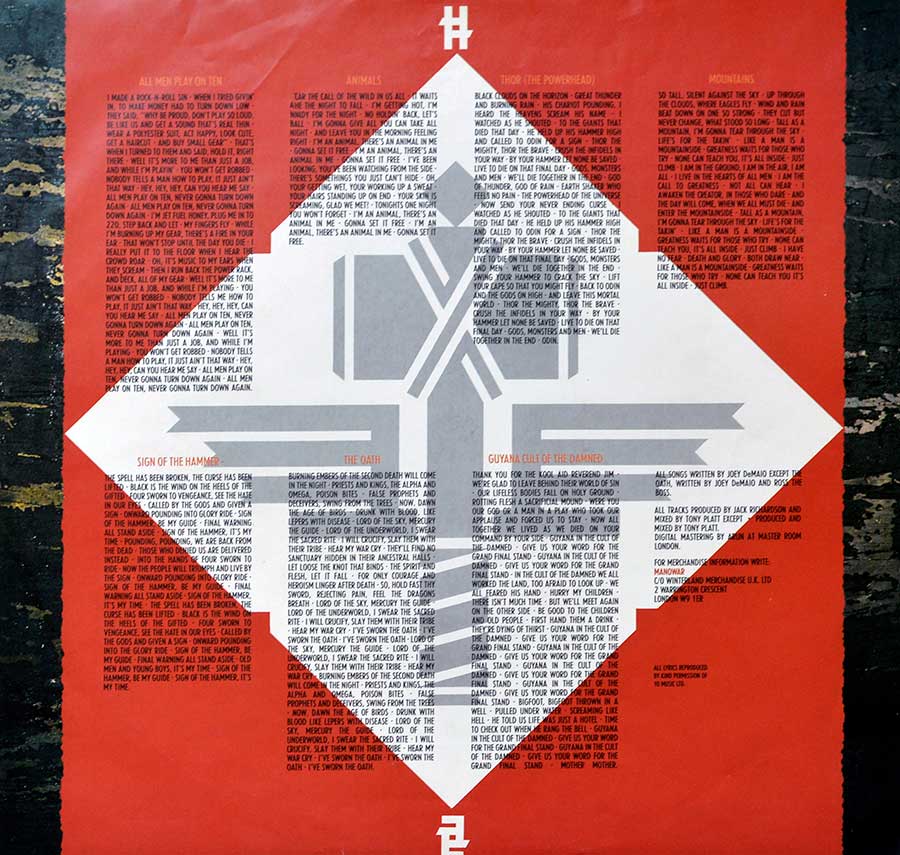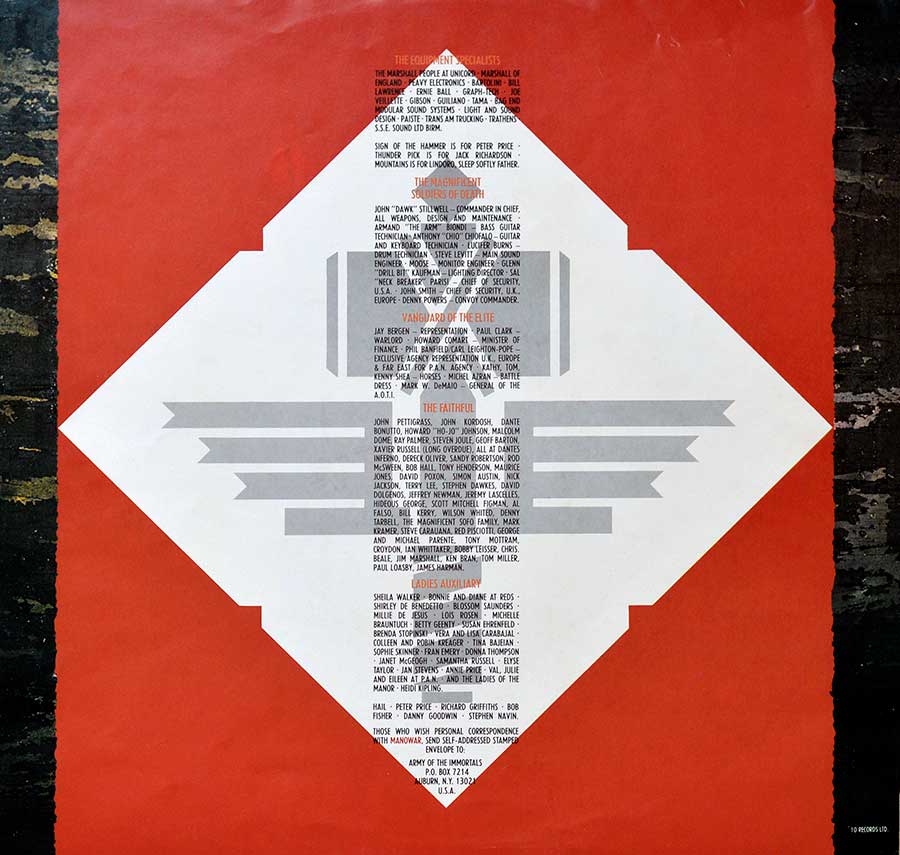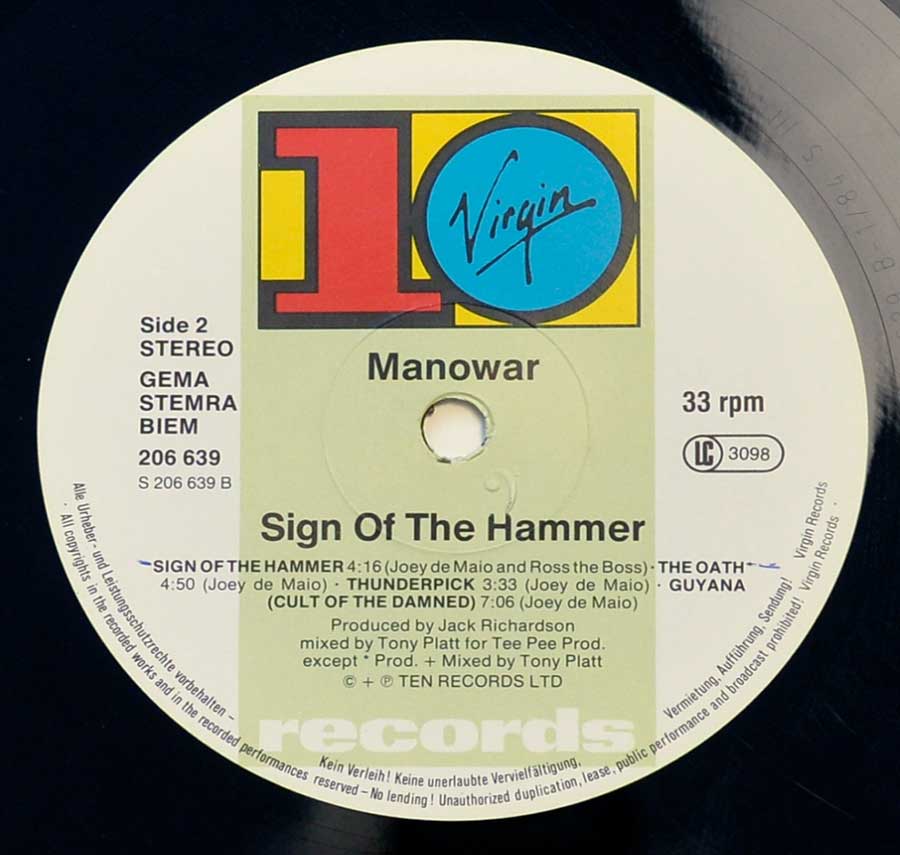"Sign Of The Hammer" Album Description:
Historical and cultural context
1984 was peak heavy metal arms race: bigger tours, tighter leather, and choruses sharp enough to cut radio. While MTV polished the edges, the underground kept its boots muddy, and Manowar planted both feet firmly in the camp of unfiltered “true metal.” The record arrives as a counter-proposal to gloss—steel instead of chrome.
How the band came to record this album
After a rapid run of early releases, the band was running on caffeine, ambition, and a collective refusal to turn it down. Label shuffling and busy touring pushed them into studios on both sides of the Atlantic, but the mission stayed simple: make songs that feel like banners in the wind. The result sounds road-worn and stubborn—in the best way.
The sound, songs, and musical direction
The opener “All Men Play on Ten” isn’t subtle; it’s a manifesto disguised as a joke, a wink with a clenched fist behind it. “Thor (The Powerhead)” swings like a longship in rough seas—hammered rhythms, heroic vocal lines, and riffs that suggest thunder has tempo. “Mountains” slows the march into a widescreen climb, all sky and echo, while “Thunderpick” is a bass-as-weapon showcase.
The title track tightens the screws: mid-tempo, chest-out, with hooks that lodge like a sigil on a shield. Throughout, the production keeps the edges bright but not brittle; you can hear the room, the sweat, and the grin right before the chorus hits.
Comparison to other albums of the year
Stack it next to Metallica’s “Ride the Lightning” and Maiden’s “Powerslave” and you hear different answers to the same 1984 question. Where others pursued complexity or speed, Manowar doubled down on ceremonial heft and operatic melody. If Mercyful Fate brought the candlelit crypt, Manowar brought the open-air battlefield.
Controversies and cultural ripples
“Guyana (Cult of the Damned)” dragged recent tragedy into metal’s amphitheater, and not everyone applauded. Some heard exploitation; others heard a grim cautionary tale set to ironclad riffs. As usual with this band, the debate made the believers turn it louder.
Band dynamics and creative tensions
You can feel the push-pull between raw power and pageantry: Joey DeMaio’s low-end theatrics, Ross the Boss’s flinty guitar lines, Scott Columbus stamping time like a boot on boards, and Eric Adams belting like the front row owes him tribute. The chemistry is combustible, but the songs keep it aimed forward rather than up in smoke.
Critical reception and legacy
Critics were split between eye-rolls and grudging respect, which for Manowar is basically a five-star review. Fans, meanwhile, adopted these tracks as field hymns; the choruses aged into call-and-response rituals. Decades on, the record sits as the sturdy bridge between the scrappy early years and the empire-sized statements to come.
Closing reflection
Spin it today and the riffs still carry the smell of damp denim and fog-machine victory. “Sign of the Hammer” isn’t about nuance; it’s about belief—loud, defiant, occasionally ridiculous, and somehow pure. File it under albums that make you stand a little wider without asking permission.










